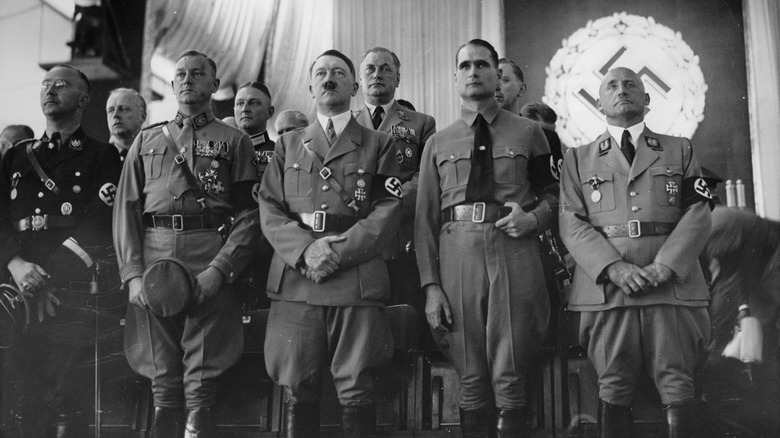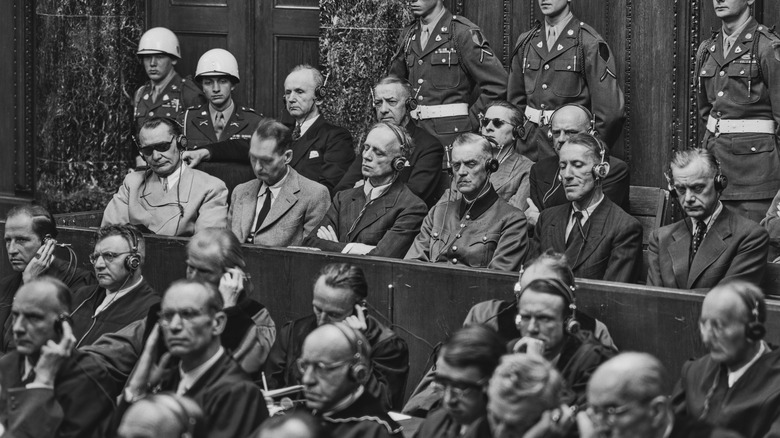How Did Germany 'Denazify' After WWII?
One of the ugliest periods of world history, and certainly the ugliest period of the 20th century, occurred during the years when Germany was controlled by the Nazi party and Adolf Hitler. The atrocities committed by the Germans before and during World War II, including the Holocaust – which resulted in the deaths of at least six million Jews and uncounted deaths among other groups, according to the Holocaust Encyclopedia – will not be rehashed here.
After World War II ended and the Nazis were removed from power, there was considerable cleaning up to be done. Germany and its economy were in shambles, its people impoverished, as Investopedia reports. The men (and sometimes women) who helped the Nazis carry out their atrocities would need to be brought to justice, but in a larger sense, the ideals of Naziism had infected the country's culture, its laws, its school textbooks. And the country's new government, with the help of Europe and the United States, had to rebuild a nation while in the process excising whatever remnants of Naziism remained.
It was and is a process that, by some definitions, is still going on to this day.
Job One: Punishing War Criminals
The first order of business in de-Nazifying Germany, as Alliiertenmuseum notes, would be dealing with the estimated 8.5 million members of the Nazi Party still living in Germany. There was also the matter that an unknown percentage of Germans, of the 70 million or so that lived at the time, belonged to or, at the very least, were sympathetic to, Nazi-affiliated ideals and groups.
As for the soldiers themselves, the worst of the worst, such as Hermann Göring (Hitler's former deputy), Rudolf Hess (deputy leader of the Nazi Party), faced the music at the Nuremberg tribunals (above), according to the Holocaust Museum. Some, such as Göring, were put to death, while others, such as Hess, were sentenced to life in prison.
The way the rest were dealt with was a bit haphazard, according to Alliiertenmuseum. Effectively, whichever occupying power (the U.S. or Britain, for example) occupied any particular territory made known or suspected Nazi sympathizers explain themselves through questionnaires about their history and affiliations and, in some cases, with the testimony of neighbors. Those who failed could face sanctions, such as lowered food rations, being forced into retirement, or even being sent to a labor camp.
Job Two: New Laws and Assimilation
Even as the Allies were working towards ridding Germany of its Nazis and their sympathizers, there was also the matter that laws from the era were still on the books. As the National World War II Museum notes, the occupying forces were given the task of either combing through German law, line-by-line, and getting rid of anything Nazi related, or by simply rewriting German law from the ground up. They chose the former, and with the help of an army of anti-Nazi and pro-Allies German jurists and scholars, undertook the removal of everything Nazi related from German law. The process was tedious and even touched upon matters such as labor and marriage law.
There was also the matter that, as German History in Documents and Images notes, there were some 7 or 8 million Germans who were considered "minor Nazis" and who couldn't be kept segregated from German society forever. Some were brought back into public-facing positions, possibly against the wishes of regular Germans. Those "de-Nazified" Nazis were put into those positions with the expectation that, should they become problematic, German law would deal with them.
Job Three: Recognize That The Process Is Ongoing
In a way, the process of de-Nazifying Germany is an ongoing one, in that the country takes great care to own up to its past while at the same time making sure that history doesn't repeat itself.
German schoolchildren are taught honestly and unambiguously about the Holocaust and their role in it, as Via Travelers notes. Students also get an up-close-and-personal experience as regards the Holocaust, in that they take field trips to cemeteries, concentration camps and the like. Students may be called upon to give oral presentations about this aspect of their country's history as well.
Germany is also keen to keep Naziism and Nazi symbology out of its country. Hate speech, which includes pro-Nazi sympathies and Holocaust denial, are crimes in Germany, according to PBS. Even displaying Nazi symbols, such as the swastika (outside of an artistic or historical context), is a crime punishable by time in prison, according to die Welt.
Naziism remains in Germany, despite the country's best efforts to extinguish it completely. In 2021, Christine Lambrecht, Germany's minister of justice, mourned the fact that hate groups were operating and getting stronger in her country. "The waves of hatred are even more aggressive than before the pandemic," she said at the time, via PBS.



